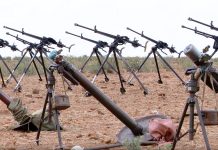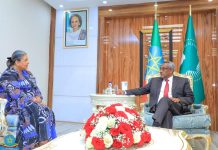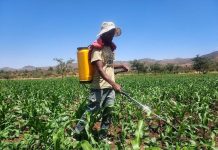Africa-Press-Ethiopia
For months, ENDF troops aided by Eritrean soldiers have tortured, sexually assaulted, killed, and displaced Tigrayan civilians. The TPLF has also perpetrated some human rights abuses. Although TPLF troops assumed control over the capital Mekelle and Prime Minister Ahmed recently declared a ceasefire, the lull in fighting was short-lived. On August 6th government aligned militias resumed attacks on Tigrayans and by August 10th, Prime Minister Ahmed called on all capable Ethiopians to stop Tigrayan insurgents “once and for all.” Already in less than a year, violence trauma and widespread famine have devastated virtually all communities in Tigray. More than 6 million people are affected by the conflict, and 2.2 million have been displaced. Of these, almost 1 million are women and girls internally displaced within the boundaries of Ethiopia. There are also approximately 20,000 Tigrayan women and girls who have fled Ethiopia altogether and now live as refugees in Sudan.
But now, when so many displaced women and girls have survived sexual violence and need help the most, the humanitarian system is failing them. Although some form of humanitarian relief is believed to be reaching about 75 percent of Tigray, the assistance provided is scant and wholly insufficient relative to the needs. Additionally, the regularity of assistance and access is unclear. Further complicating the ability to provide assistance to those in crisis, the UN Office of the Coordination of Humanitarian Affairs (OCHA) is more than 50 percent short of the $854 million it requested to mount an adequate response. Displaced Tigrayans do not have enough food, shelter, medical care (including mental health care), hygiene kits, or water.
Longstanding experience in multiple humanitarian crises around the world have built a strong evidence base that scarcity of resources combined with inadequate safeguards contribute to a profoundly heightened risk of sexual exploitation and abuse (SEA). And the lack of dedicated prevention measures and accountability for abuses by perpetrators of SEA exacerbates those risks. Given the severity of the crisis and the impediments to rolling out a full humanitarian response, the humanitarian needs of civilians will persist, and SEA will be a constant risk. Indeed, United States Agency for International Development (USAID) Administrator Samantha Power noted that many veteran humanitarian aid actors have said that “the nature of this conflict, the combination of gender-based violence, widespread conflict, and the threat of starvation and famine has led to the worst humanitarian conditions they have ever witnessed.” The stakes are high. Therefore, all organizations and agencies working in Tigray must understand SEA, mitigate risks that increase its likelihood, and commit to appropriate and timely responses when SEA occurs. Among the risks that increase the likelihood of SEA are scarcity of resources, restricted humanitarian access, and the high number of female-headed households.
Conflict-Related Sexual Violence
Although the Ethiopian government has severely restricted information coming out of Tigray, reports of appalling sexual violence abound. It is widely documented that soldiers––primarily those of Eritrean forces and the ENDF––used rape and other forms of sexual violence deliberately as weapons of war. The Ethiopian Minister of Women, Children, and Youth Filsan Abdullahi Ahmed deployed a taskforce team to the region in February 2021, which concluded that “rape has taken place conclusively and without a doubt.”
Men in uniform have reportedly forced civilians to rape family members and gang rape has been common. Based on credible agency reports, former UN Under-Secretary-General for Humanitarian Affairs and Emergency Relief Coordinator Mark Lowcock estimated in April 2021 that 30 percent of all incidents against civilians involved sexual violence. He concluded that Ethiopian soldiers are using sexual violence “as a weapon of war, as a means to humiliate, terrorize and traumatize an entire population today and into the next generation.”
Some survivors have described the attacks as efforts to ethnically cleanse the population with their attackers saying things such as they have come to “cleanse the bloodline,” and “if you claim to be Tigrayan, we will come and rape you again.” In June 2021, USAID Administrator Samantha Power further explained, “the scale of those crimes, and the reports of the soldier’s conduct and testimony, suggests that the Ethiopian military, together with their allies in the Eritrean military and forces from the Amharan region, have launched a campaign to shatter families and destroy the reproductive and mental health of their victims.”
Humanitarian Response
The conditions for women and girls who have fled are appalling. Access to health care––especially sexual and reproductive health services––is limited, and shelter is inadequate at best, unsafe at worst. Furthermore, famine conditions have set in throughout large areas of Tigray, yet the Ethiopian government continues to restrict humanitarian access.
More than 5 million people in Tigray require immediate humanitarian assistance. Among those, almost 1 million Tigrayans are experiencing famine. At least 54 organizations are providing aid and services. However, there are still significant gaps in assistance that disproportionally affect Ethiopian women and girls who have virtually no access to livelihoods and often live in insecure environments.
All armed actors must mutually agree on a political solution to this conflict. Among numerous other groups, Refugees International has called for “an absolute freeze in fighting, unfettered access for aid groups, and a relief effort commensurate with the catastrophic humanitarian situation on the ground.” But no matter how the political dynamics of the conflict unfold, one aspect of this crisis will remain consistent. There will continue to be enormous humanitarian needs, and SEA will remain a risk that all relevant actors must mitigate.
Sexual Exploitation and Abuse
Sexual exploitation and abuse (SEA) occurs when someone attempts or succeeds in abusing power for sexual purposes. Given the role that government and humanitarian actors are playing in Tigray, considerable power imbalances exist. Even within the civilian population, Ethiopian men have far more stature and power than women, and Ethiopia ranks 173 out of 189 countries on the United Nations Development Program’s (UNDP) Gender Inequality Index. Therefore, the humanitarian and displacement crisis is layered on top of a society with pre-existing gendered power inequities. Furthermore, vast numbers of Tigrayans are displaced and living in host communities in Ethiopia and Sudan. The host communities generally have greater power and influence than displaced Tigrayans, creating conditions that can easily lead to SEA.
According to the UN, “sexual exploitation means any actual or attempted abuse of a position of vulnerability, differential power, or trust, for sexual purposes, including, but not limited to, profiting monetarily, socially or politically from the sexual exploitation of another. Similarly, the term sexual abuse means the actual or threatened physical intrusion of a sexual nature, whether by force or under unequal or coercive conditions.”
Sexual Exploitation and Abuse in Tigray
According to rapid gender analyses (RGAs)––snapshots about the “different needs, risks, capacities, and coping strategies of women, men, boys, girls, and gender-diverse” people during a crisis––the most visible sexually exploitative relationships in Tigray are between members of the general community. This includes the host population, internally displaced people (IDPs), and refugees.
IDPs make up the largest number of displaced Tigrayans, with at least 1.7 million displaced within Ethiopia.[2] About half of them are women and girls. There are also about 95,000 refugees in Tigray who were living there even before the conflict began in November 2020. A majority of these refugees are Eritrean. The RGAs report that male members of the host community, male IDPs, and male refugees have sexually exploited women and girls within and between these groups. For example, men in the host communities are coercing displaced women and girls to engage in survival sex to meet their basic needs, especially to obtain food. This increasing trend aligns with the assertion that “the relationship between host and IDP and refugee populations is at an all-time low.” Humanitarian actors must improve the relationship between host communities and IDPs and refugees by providing aid to both populations. Local leaders must also hold accountable community members who are forcing women into survival sex.
Furthermore, as the humanitarian response ramps up, the risk is high that those meant to help will also be implicated in exploitation. Two humanitarian staff members who respond to complaints about SEA in Ethiopia told Refugees International that as in most other humanitarian responses, in Tigray, without strong safeguards, there are increased risks that people with more perceived power––whether they be IDP leaders, host community members, government representatives, or humanitarian staff–– could take advantage of their positions by sexually exploiting women and girls in the communities where they work. Refugees International never obtained specific evidence of SEA in Tigray. However, every person with whom Refugees International spoke stressed that the risk factors that lead to SEA are exceptionally high in this humanitarian context. They further confirmed that a lack of reporting and data does not indicate a lack of SEA. Instead, it demonstrates that there are barriers to reporting, the mechanisms of reporting are imperfect, survivors fear reprisals, and access to justice is difficult, among other explanations.
Risks to Increasing Sexual Exploitation and Abuse
There are several characteristics of this displacement crisis that, if not adequately addressed, will likely lead to an increase in SEA over the coming months and years in Tigray. Some of these include the scarcity of resources, restricted humanitarian access, and the high number of female-headed households.
Scarcity of Resources
Food and shelter are two of the most urgent needs for displaced Tigrayans. Tigray’s food insecurity has reached disturbing levels, with at least 900,000 people experiencing famine and about 2 million more on the brink of famine. This effectively means that almost a million people are living in communities in which at least “two people for every 10,000 are dying each day due to outright starvation or to the interaction of malnutrition and disease.” The Integrated Food Security Phase Classification (IPC) determined that more than 5.5 million people are acutely food insecure. Simply put, this means that without sustained relief assistance, they will fall into famine conditions. This extreme lack of food in Tigray is a direct result of strategic choices made by the Ethiopian and Eritrean forces that have displaced populations, restricted movement, limited humanitarian access, destroyed crops, and decimated livelihoods and markets. In short, it is a manufactured catastrophe.
As food becomes scarcer, the risk of SEA increases. There are reports that displaced women and girls are exchanging sex for food from host communities. Additionally, food distributions are conducted in such a way that SEA can easily go unnoticed. An NGO staff member recently in Tigray told Refugees International that food distributions––which there are inadequate and still have not reached 1.53 million people in need––are chaotic and lacking sufficient transparency and accountability. “Food distributions are a mess. No one really has an accurate measure of who has received food and who hasn’t. While it is understandable given that the situation is an emergency and IDPs are often on the move, it means it is would be quite easy for exploitation to occur.”
In addition to the practice of exchanging sex for food, a close to complete decimation of livelihoods has compelled displaced women and girls to exchange sex for small amounts of cash––as little as $1.25 for sexually exploitative relationships. According to recent focus group discussions, IDPs reported that this type of survival sex is a new practice. They said that sex in exchange for basic needs has only now become “common” since the beginning of the conflict last year. Indeed, 60 percent of respondents in a recent survey knew of women and girls being exploited to get food or small amounts of cash.
The lack of adequate shelter in Tigray has compounded the desperation caused by the extreme lack of food. Safe shelter is an urgent need, especially in light of the upcoming Belg/rainy season, which could be devastating to large numbers of IDPs sleeping in the open air or inadequate shelters. With subpar shelter, the rains could also dramatically increase the spread of communicable diseases. There are no sex-segregated sleeping facilities or latrines in many IDP camps, and newly displaced people often sleep in the open air. This leaves the most at-risk people, including displaced women and girls, vulnerable to gender-based violence (GBV) Furthermore, IDP women and girls have reported that men have raped them as they leave the camps to collect firewood and water. These risks make the lack of sufficient “safe spaces” in the camps particularly problematic. Safe spaces are formal or informal places where women and girls feel physically and emotionally safe. They are essential to set up at the very beginning of any humanitarian emergency. They also provide a location where women and girls can feel most comfortable reporting incidents of GBV and SEA.
Restricted Humanitarian Access
The Ethiopian government and other armed groups have restricted humanitarian access to Tigray throughout the conflict. These restrictions have severely hampered the humanitarian response in the region. For months from the start of the crisis, most of Tigray was largely inaccessible to humanitarian aid workers. One senior UN official even described the Ethiopian government’s restrictions as “a de facto economic blockade.”
The situation recently improved. As of the beginning of July, 75 percent of the area received at least some form of humanitarian assistance. However, access to people in need and levels of assistance are inconsistent and unpredictable. Furthermore, after such a long period during which virtually no aid could make it into the region, “supplies and personnel fall short of the immense needs of people in Tigray.” And severe restrictions on access continue.
For example, the UN Office of the Coordination of Humanitarian Affairs (OCHA) recently reported that road access––which was briefly possible through the neighboring Afar region with heavy control by regional and federal authorities––was totally inaccessible. This was due to security concerns following an attack on a World Food Program (WFP) convoy on July 18.
In the prior week, a convoy of 54 trucks of food, fuel, and medical supplies was allowed into Tigray’s capital Mekelle following almost a month in which more than 82,000 IDPs living there received no humanitarian assistance at all. According to USAID officials who made site visits to Mekelle IDP camps in early 2021, “some sites did not have any food, health, gender-based violence prevention and response, other protection, or water, sanitation, and hygiene (WASH) services. Many of the centers that did have these services were experiencing shortages of medicines, food, and supplies due to the sheer volume of people in need.” While the COVID-19 pandemic and its related restrictions likely hampered direct access to IDPs and camps––according to an NGO program manager––the Ethiopian government’s deliberate actions to block aid and limit humanitarian actors in the region had little if anything to do with public health.
Ongoing difficulties in getting supplies into Tigray due to administrative barriers and the ever-changing security landscape exacerbate the scarcity of resources. This puts women and girls at greater risk of experiencing SEA. Additionally, the bureaucratic hurdles that the Ethiopian government has deliberately put in place for humanitarian personnel to access Tigray have resulted in high staff turnover. A UN staff member in Ethiopia explained to Refugees International that it is a challenge to obtain visas. When the government does issue visas, they are usually for a short period of time. She added, “we are particularly concerned about high staff turnover. With high turnover, it is difficult to build capacity. We might train staff on SEA and its consequences, but without a stable, consistent workforce, that knowledge is lost, and it is virtually impossible to hold anyone accountable.”
Moreover, ongoing security issues also restrict humanitarians from accessing populations in need, including high numbers of women and girl survivors of sexual violence. For example, following the murder of three of their staff members in Tigray at the end of June, Médecins Sans Frontiere suspended some of its activities in central and eastern Tigray. By mid-July, OCHA recorded over 130 incidents in which ENDF, allied Eritrean Defense Forces (EDF), or Amhara militia have turned away aid agencies at checkpoints or assaulted and interrogated them. The conflict continues to evolve, putting humanitarian aid workers at risk and limiting their ability to provide services that the displaced population desperately needs. As recently as July 22, witnesses reported fighting near Adi Harush refugee camp in southern Tigray.
Female-Headed Households
Even before the conflict began, women headed thirty-four percent of households in Tigray, higher than in many countries. Since the onset of the civil war in November 2020, that percentage has only increased. Despite the rise in female-headed households, Tigrayan society remains patriarchal, and displaced Tigrayan women continue to have limited power, or leadership and decision-making opportunities. Lack of power, lack of protection from a male family member, and lack of livelihoods are some of the contributing factors to female-headed households being particularly vulnerable to GBV and SEA. NGOs working in Tigray report that single, divorced, or widowed women are at even greater risk of sexual exploitation than their peers.
One of the reasons why women who are alone or who are heading households are more vulnerable to SEA is that they have very limited, if any, access to livelihoods. Although some informal work exists, a recent Rapid Gender Analysis (RGA) by the International Rescue Committee (IRC) finds that due to social norms, “any benefits of casual labor as an income stream do not equitably extend to women.” Additionally, movement constraints specific to women and childcare responsibilities limit access to other types of income-generating work. The RGA suggests that “women are twice- disadvantaged compared to men. Not only have they experienced a loss of livelihoods during the crisis, but they continue to have less access to the few available income streams open to refugees and IDPs.”






